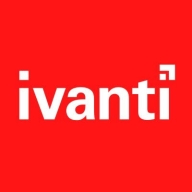


Ivanti Avalanche and Microsoft Enterprise Mobility + Security (EMS) are two notable products in the enterprise mobility management space. Microsoft EMS edges out due to its broader feature range.
Features: Ivanti Avalanche's key features include robust device management, remote control, and update automation. Users value its streamlined control over enterprise devices. Microsoft EMS offers advanced security features such as identity protection, threat analytics, and device management within a single suite. Users appreciate its integration with existing Microsoft services. Microsoft EMS provides a wider array of features compared to Ivanti Avalanche.
Room for Improvement: Users suggest that Ivanti Avalanche could enhance its reporting capabilities, simplify its interface, and improve its documentation. Microsoft EMS users indicate a need for better integration with non-Microsoft products, improved speed in administrative tasks, and a more intuitive user experience. Both products have areas to work on, but Ivanti Avalanche users focus on usability improvements, while Microsoft EMS feedback centers around broader compatibility and efficiency enhancements.
Ease of Deployment and Customer Service: Ivanti Avalanche users note that setup can be complex but recognize responsive support. Microsoft EMS deployment is typically described as straightforward due to extensive documentation and integration with existing Microsoft environments. However, users report mixed experiences with customer service responsiveness. Microsoft EMS has a slight advantage in deployment ease but could improve in the support area.
Pricing and ROI: Ivanti Avalanche offers competitive pricing, and users often highlight a satisfactory return on investment, especially for device-centric management needs. Microsoft EMS, while perceived as more expensive, is considered worth the cost due to its extensive capabilities and integration convenience, leading to positive ROI feedback. Users see a greater value proposition in Microsoft EMS despite higher costs.



Microsoft Intune provides centralized management of mobile devices and applications, ensuring security, compliance, and productivity through integration with Microsoft services like Microsoft 365 and Azure Active Directory.
Organizations use Intune for managing mobile devices and applications, enhancing security and compliance across platforms. With features like single sign-on, conditional access, and zero-touch deployment via Autopilot, it facilitates efficient operations. Intune's scalability, easy enrollment, and capabilities such as remote wipe support diverse device management, offering robust data protection and efficient operation. Despite its features, improvement areas include reporting, compatibility with non-Microsoft devices, and better support for macOS and Linux devices.
What are the key features of Microsoft Intune?
What benefits should users look for in reviews?
In industries such as finance, healthcare, and education, Microsoft Intune is implemented to ensure secure and compliant device management. Companies leverage its capabilities to deploy security policies and manage both corporate-owned and BYOD environments, facilitating a unified approach to data protection and compliance.
Avalanche is rooted in managing the mobile computers that drive the supply chain. As those devices have evolved, Avalanche has continued to keep pace. So, whether you have legacy Windows CE devices deployed in your warehouse, or are looking to extend mobility to the showroom with today’s latest Android and iOS devices, Avalanche can manage them all.
Microsoft Enterprise Mobility + Security (EMS) is the only comprehensive solution designed to help manage and protect users, devices, apps, and data in a mobile-first, cloud-first world.
We monitor all Enterprise Mobility Management (EMM) reviews to prevent fraudulent reviews and keep review quality high. We do not post reviews by company employees or direct competitors. We validate each review for authenticity via cross-reference with LinkedIn, and personal follow-up with the reviewer when necessary.